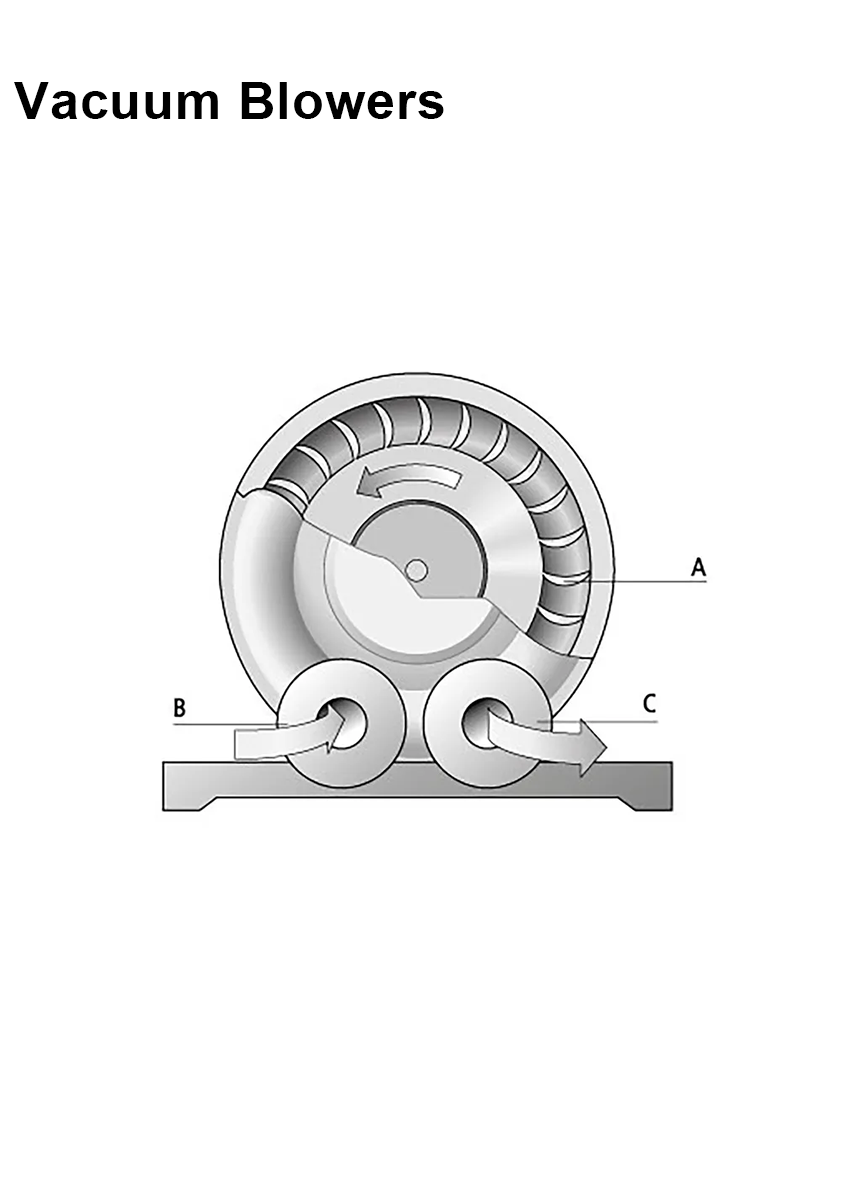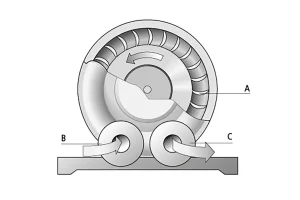
Vacuum Blowers
Vacuum Blowers

The blades (A) transport, accelerate and compress the air on the momentum principle. The air is dragged by the blades in this case. A vacuum is created at the suction end (B) this way. The compressed air (exhaust air) escapes through the outlet opening (C).
Blowers provide a very high suction rate due to the large air channel volume and specially shaped blades.
Advantages of vacuum blowers
- Enormous suction rate
- High leakage compensation
- Evacuation of large volumes in a short time
Typical areas of application
- Handling of porous workpieces, such as cardboard, insulation material, chipboards or bags
We distinguish between two basic types of vacuum blowers:
Vacuum blowers
- Vacuum blowers are either directly driven or frequency regulated.
- Used especially for handling porous workpieces (chipboards, bags, etc.).
- Frequency-controlled blowers can be customized by controlling the motor speed and respectively the suction rate.
Vacuum blowers with reversing
- Vacuum blower with electro-pneumatic reversing for control of suction, blowing and neutral position.
- Used for handling air-tight workpieces that are picked up and deposited quickly.
